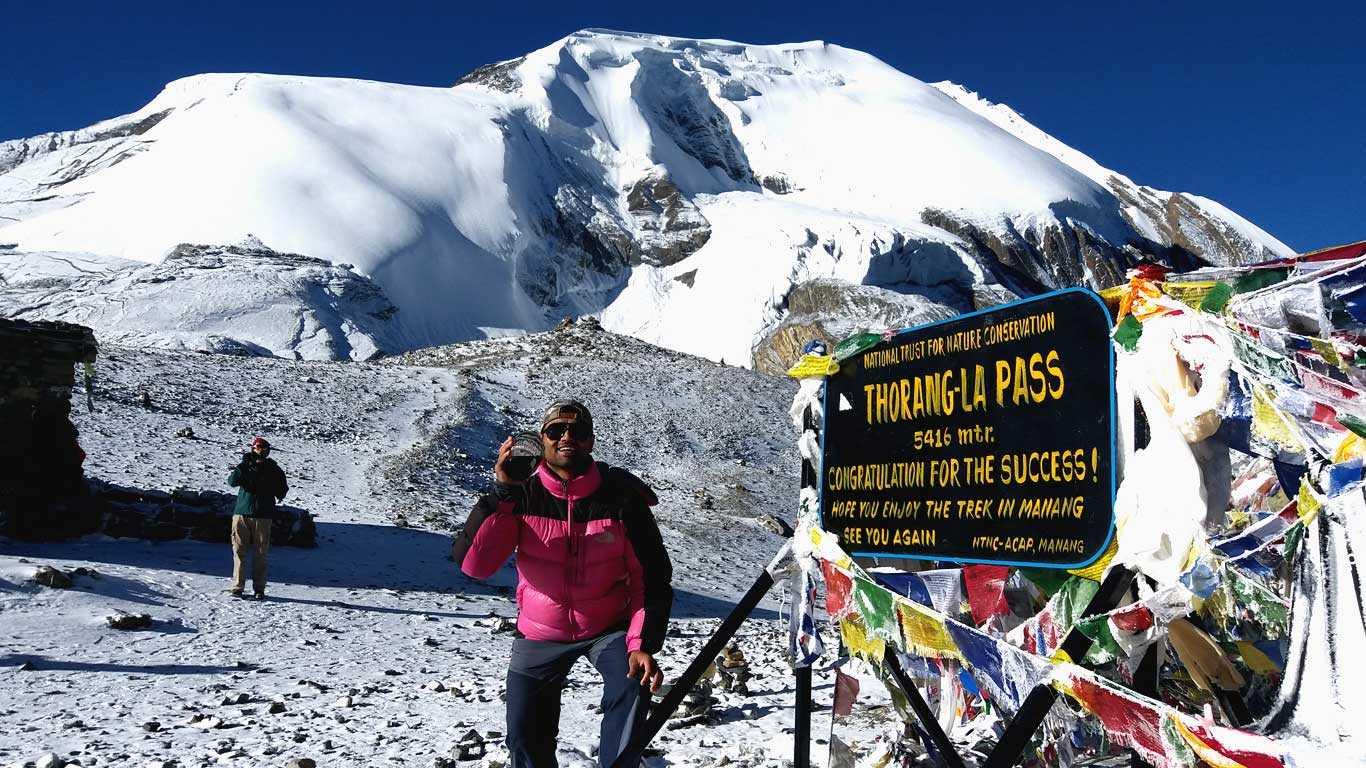Best Season for Annapurna Base Camp trek

Best season for Annapurna Base Camp trek
Hello trekkers, if you are thinking about the ABC trek, which refers to the Annapurna Base Camp trek, and you are confused about choosing the best season for trekking, then you are not alone. I was also faced same kind of problems during my trekking decision.
This 10-minute guide will clear all your confusion, and you will be able to make a great decision on which season is suitable for you.
Annapurna Base Camp Trek is located in the Annapurna area, which takes you into the heart of the mountain ranges, characterized by majestic mountains and picturesque green forests, and villages. This trekking adventure is one of the most popular experiences for those visiting Nepal and hiking to the Annapurna Base Camp.
The Annapurna Base Camp Trek is relatively easy and can suit amateurs or even expert adventurers. When hiking, you can cross various terrains and vegetation, including rice terraces, rhododendron hills, meadows, and rough lands.
On the way, one has to cross typical Gurung and Magar villages, which are attractive to see and even more interesting to understand these people's way of life. This trek is not only pleasant but also very cultural.
The journey to the Annapurna base camp is a milestone in some ways, as immense mountains surround you; Annapurna I, one of the world's highest peaks, is also visible from this trek. The feeling of finally coming face to face with those mighty giants inspires one, and most trekkers agree that this is the best part of the adventure.
On the trek, it is not enough to get to the destination – the focus is on having fun throughout the process; each day will be filled with something new amid the mountains.
Best Season for Annapurna Base Camp Trek
Annapurna Base Camp Trek is a popular, beautiful trek that surrounds the true beauty of the mountains for trekkers to enjoy. But some of the best seasons for the Annapurna Base Camp trek are Spring and Autumn.
Thus, the climatic conditions vary depending on the season that defines the trail's appearance and the experience.
It is also essential to know the positives and negatives of each season so that individuals can plan for trekking at the right time, so that it will not be risky, and the experience will be very memorable. Here’s a detailed look at what each season offers:
Spring (March to May)
Trekking to Annapurna Base Camp is preferred during the spring season. Spring is one of the best times to trek to Annapurna Base Camp.
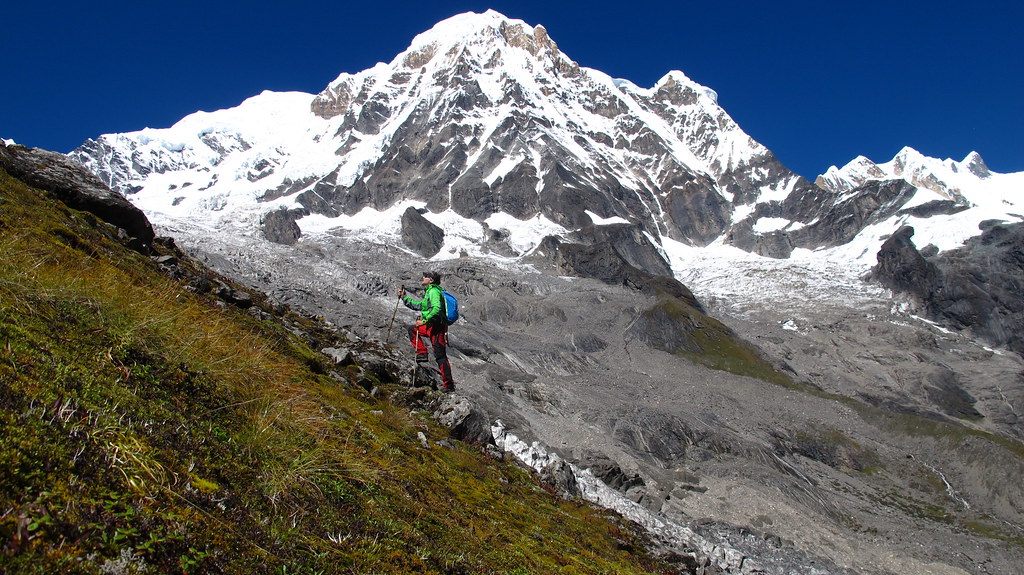
The whole region comes to life with the flowering of rhododendrons, magnolias, and other wildflowers that decorate the trails with bright hues.
Trekking conditions are pretty good. The climate in the region is moderate, with hot and sunny days and excellent and sometimes even chilly nights.
Pros:
Mild Temperatures: At low altitudes, daytime temperatures are moderate, ranging from 10-20 Degrees Celsius, which makes it suitable for trekking exercises. The evenings and nights are mild but not extremely cold, particularly with a relatively low altitude.
Blooming Flora: The trails go through forests, and the flowers are abundant, especially the Rhododendrons, which seem to be in bloom season. Depending on the season, this adds a nice touch to the snowy mountains that can be seen while on the trek.
Clear Views: The weather is usually fine, and there are good views of other mountains, particularly Annapurna I, Machapuchare, and Hiunchuli.
Extended Daylight: Longer days result in more time in the daytime for hiking, which implies that it is possible to travel for more hours and enjoy the views.
Cons:
Crowded Trails: Spring is a busy time for trekking. Many trekkers attempt the hike in spring, especially in April. Hence, the scramble as the tea houses fill up fast. One should book a particular place or area in advance.
Higher Costs: There is a likelihood that the prices for accommodation and other services you need would be slightly higher than in the off-season.
Summer/Monsoon (June to August)
The monsoon accompanies the summer season in Nepal and is characterized by intense precipitation in the Annapurna area.
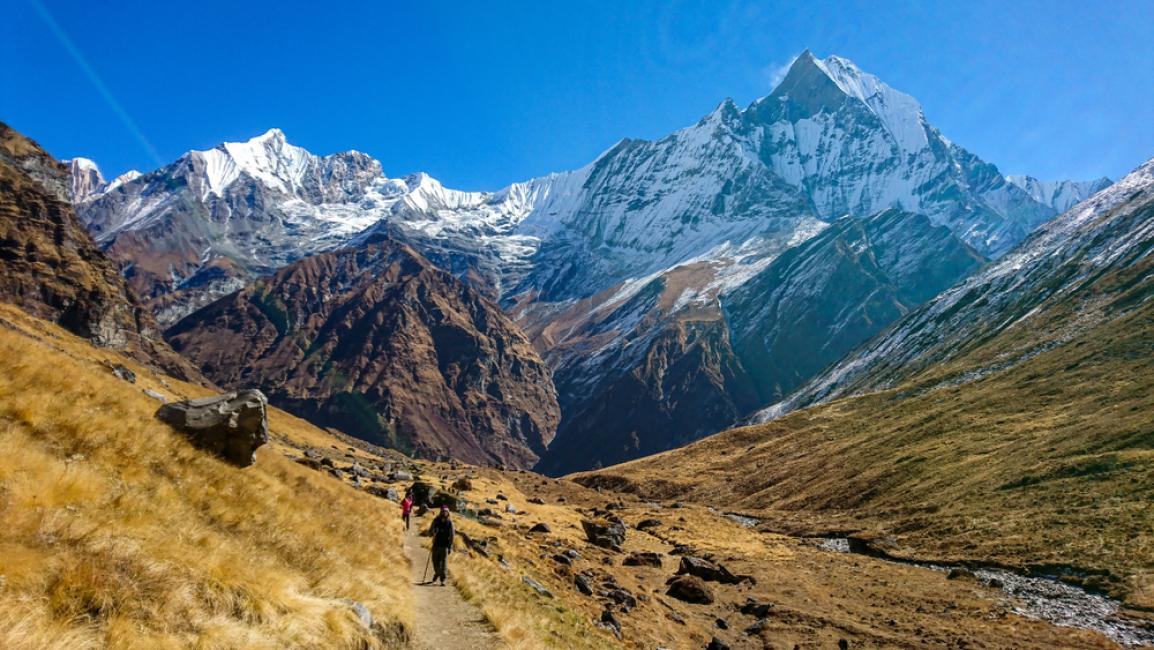
The rain makes the environment beautiful with green vegetation cover, but it also comes with some dangers, such as slippery trails, attacks from leeches, and the possibility of a landslide.
Sometimes, clouds cover the mountains, so hiking through the misty forests may be interesting for the mountain adventurer.
Pros:
Lush Greenery: These are effects, such as heavy rains, that enhance vegetation growth, enabling forests and other vegetation-rich landscapes to grow to their total density. The season brings the most beautiful foliage to that area while the air is fresh and clean.
Fewer Crowds: The monsoon season still attracts very few trekkers, implying that one is more likely to have the trekking experience all to themselves. Depending on the season, however, you will have the trails and tea houses mostly to yourself.
Lower Costs: The services and accommodations are cheaper mainly because most societies consider this an off-peak season. Identifying some relatively low-priced products that make the market cheap is also possible.
Cons:
Heavy Rainfall: Sometimes, when it rains moderately often or when there is much demand for a certain period, the trails become muddy and slippery for easy running. There is also the potential for landslides in some regions.
Limited Mountain Views: The clouds and fog accompanying the monsoon often obscure the spectacular views of the Annapurna range, which is a significant highlight of the trek.
Leeches: The wet conditions are ideal for sponges, which can be a nuisance on the trail, especially in forested areas.
Autumn (September to November)
Autumn is the most popular time for trekking to Annapurna Base Camp, and for good reason. The monsoon rains leave behind clear skies and crisp air, providing the best visibility of the stunning mountain vistas.
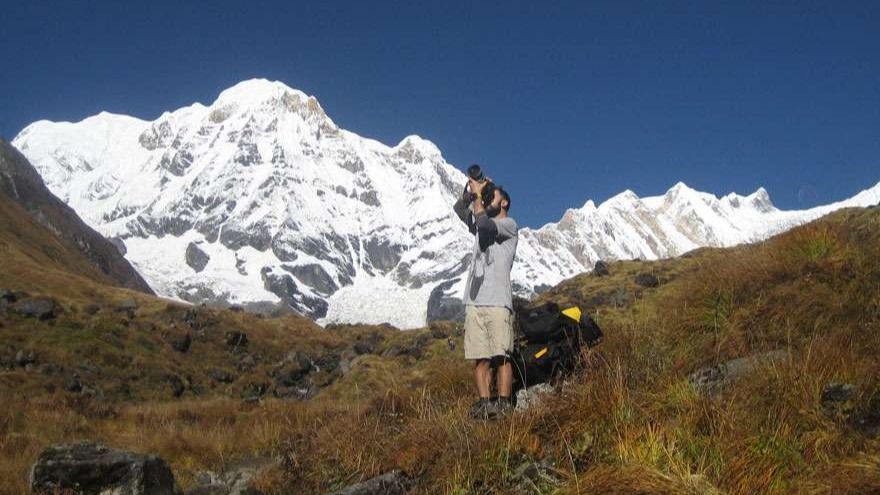 The temperatures are mild, and the weather is typically stable, making it the peak season for trekkers. Moreover, it’s generally the best time for photography in the region.
The temperatures are mild, and the weather is typically stable, making it the peak season for trekkers. Moreover, it’s generally the best time for photography in the region.
Pros:
Perfect Weather: Autumn offers ideal trekking conditions with mild temperatures, typically 10°C to 20°C during the day at lower elevations. Nights are more relaxed but still manageable.
Clear Skies: Post-monsoon, the skies clear up, offering some of the best pictures of the Annapurna and Dhaulagiri ranges. This is the best time to capture those postcard-perfect shots.
Stable Conditions: The weather is generally stable, with little chance of rain or snow. This consistency makes planning and sticking to your itinerary much more accessible.
Vibrant Atmosphere: The trails are lively, and trekkers worldwide are on them, creating a vibrant and energetic atmosphere. Tea houses are fully operational and offer a wide range of services.
Cons:
Crowded Trails: As the most popular trekking season, the trails, tea houses, and popular viewpoints like Poon Hill can get crowded. Early booking is essential, and expect to share the experience with many others.
Higher Costs: Due to the high demand, prices for accommodations, guides, and porters can be higher than in other seasons. You may also need to book tea houses in advance, particularly in peak months like October.
Winter (December to February)
Due to low temperatures and snow, this is one of the best seasons for trekking in the Annapurna region. Annapurna has serene surroundings during Winter.
 The trials are far less busy, and the sight of snowy trees is quite breathtaking. However, winter has its difficulties: Low temperatures and trails filled with snow; that is why it is necessary to prepare and have certain equipment.
The trials are far less busy, and the sight of snowy trees is quite breathtaking. However, winter has its difficulties: Low temperatures and trails filled with snow; that is why it is necessary to prepare and have certain equipment.
Pros:
Peaceful Trails: Winter trekking is less crowded than other trekking seasons. The quiet environment is more intimate, allowing one to reflect and have some ‘me time’.
Spectacular Winter Views: The weather is also colder during the winter, so the scenes of the snowy peaks are seen, especially early morning. The snow itself alters the look of the landscape, adding the overall touch of winter and even making the landscape beautiful.
Lower Costs: Like the monsoon season, winter is considered the off-season, meaning the cost of lodgers and services is comparatively cheaper. Fewer trekkers also leads to enhanced availability of tea houses.
Cons:
Cold Temperatures: It will be cool, especially during the day, with lower temperatures ranging from 5°C to 10°C. At night, it will be extremely cold, especially around the highlands.
Snow and Ice: Snowing makes the trails difficult, especially on slopes, as it covers the trails and makes them slippery. Because of the accumulated snow, some parts of the trek could be closed.
Limited Services: Some tea houses may shut down at certain times of the year, mostly in higher regions. The ones that will be opened might offer limited services and options for food, and accommodation might also be scarce.
Trekking Challenges and Preparation
A trekker should be in moderate physical fitness to respond to the Annapurna trekking challenge. Moreover, the trekking quality of this trek is moderate.
 The trek also features many hours of walking, often steep uphill, and therefore, one may be prone to altitude sickness if the appropriate dos and don’ts are not followed. Bearing this in mind, trekkers need to go slow, keep themselves hydrated, and take days off if they need to.
The trek also features many hours of walking, often steep uphill, and therefore, one may be prone to altitude sickness if the appropriate dos and don’ts are not followed. Bearing this in mind, trekkers need to go slow, keep themselves hydrated, and take days off if they need to.
First, suitable clothing is a must: strong trekking boots, warm clothes, additional layers of clothing, especially for high altitudes, a high-quality sleeping bag, and perhaps trekking poles.
Trekkers should also be ready for an unfavourable, fluctuating climate, which is evident in mountainous areas.
Annapurna Base Camp Trek in each month
Annapurna Base Camp Trek in January
During January in ABC Trek, the nights are so cold that only a few trekkers will likely be found on the trail, making it a very serene encounter.

The weather conditions are fair, with excellent visibility most of the time, and the landscapes include mountain ranges such as the Annapurna I, Hiunchuli, and the Machapuchare, among others.
However, they should be ready to face cold temperatures and possibly snow in some parts of the trail, which may form small obstacles for the trekkers.
Annapurna Base Camp Trek in February
February brings more of January’s winter conditions, but with abnormally high temperatures. Although the snowy conditions continue at high elevations, the days become a little longer and brighter. The trek remains less congested, providing solitude and unfolding views of stony mountains.
The sky is often sunny, and no layer obscures the top layer of air. In the middle of the month, there is still significant snow on the trail, but the amount of melting is visible, making it easier to traverse the path. It’s hot in the day, and trekkers must still dress for the chill at night and the snow on the route.
Annapurna Base Camp Trek in March
Now, if we are talking about March, we must remember that it is the beginning of springtime, and this is when the Annapurna region wakes up. Snow melts gradually, and there are some early displays of pink rhododendrons.
 You will appreciate the warmer weather and the best time to hike during the day, though nights still tend to be cold. The absence of rain, enhanced lightning, and sunny weather make it preferable to embark on treks now.
You will appreciate the warmer weather and the best time to hike during the day, though nights still tend to be cold. The absence of rain, enhanced lightning, and sunny weather make it preferable to embark on treks now.
It is more frequent than the Off-season, still a lot fewer than the number of trekkers met during the period regarded as peak season in the trail, and as such, it is more of a balance to the amount of contact one might have with other trekkers on the trail.
Annapurna Base Camp Trek in April
Most trekkers prefer April to be one of the most favourable months for the Annapurna Base Camp trek.

The trail is magnificently covered with vernal rhododendrons and other flowers with sweet scents, making the trekking adventure so colourful and stunning. The day's warmth and cold nights are also ideal for trekking all four months of this season.
Skies remain relatively open. It is at this time that many consider the best view of the Annapurna range of the Himalayas.
However, the season's popularity means the trails and tea houses can get crowded, so bookings are recommended. The comfortable weather and beautiful scenery make April a top choice for many trekkers.
Annapurna Base Camp Trek in May
It is likewise the time of May when spring begins to fade, and the weather gets hot while flowers bloom. The flowers of the rhododendrons persist, and many forests remain green most of the year.
The climate is relatively warm, although cooler at higher altitudes; the low-lying areas may be very hot towards the month's end.

It is usually sunny at the beginning of the month; however, at the end of May, the monsoon begins to set in, and there may be clouds in the sky.
May is quite suitable for those who like warmer conditions, though the heat rises during this time and can be challenging for some people.
Annapurna Base Camp Trek in June
June is also the starting month of the monsoon period in the Annapurna area. Thus, the landscape transforms into a colourful one due to regular rains. The trek becomes difficult, with some portions containing muddy and slippery terrains, and the probability of sliding along the cliffs in some places is higher.

Most of the time, the mountains are shrouded in clouds, and the only time one can get better and more precise views is when the sunlight has washed the air almost to pinpoint clarity.
The trails are far less frequented, and as such, much of the time, one is likely to be on one's own. This kind of environment is quite beautiful in the misty rain. Nevertheless, they have gone through heavy rain in the low parts of the forests and sponges in the lower forests.
Annapurna Base Camp Trek in July
July falls in the middle of the monsoon season, and as such, its disturbingly low popularity among tourists is well justified when it comes to trekking to the Annapurna Base Camp.

The weather continues, and heavy rain makes trails slippery and muddy in some places. The forests and terraced fields are green, and the waterfalls seem the most beautiful. Nevertheless, the continuous rain and clouds deny one the opportunity to see the mountains.
However, trekking in July also has some advantages, such as witnessing the beauty of the Annapurna region in an ultimately blossoming way. Those who trek in July will find they have all the trails to themselves in all their glory.
Annapurna Base Camp Trek in August
This month is also slightly similar to the previous month – July- with monsoon rains continuing throughout the month, and the environment remains green. Due to the rain, mud, and occasional landslides, the trails remain moderately difficult, and the mountains are barely visible due to the clouds.

Though the monsoon continues until the end of the month, the conditions on the trails improve slightly at the end of the month. Flowers are still growing, and the environment is healthy and free of large-scale pollution.
Trekkers in August should pack for the possibility of rain and leech encounters, but they can expect a very lonely trek with very few other trekkers on the trail.
Annapurna Base Camp Trek in September
September is recognized as the start of the Autumn trekking season and is one of the most suitable times for the Annapurna Base Camp trek. The monsoon has brought in rain, rafted through the air, and now forget about the polluted haze; instead, we have clear blue skies and green foliage.

The trails harden, and the climate becomes considerably more predictable, relatively warm during the daytime and cool at night.
They have panoramic, terrific, unobstructed views of the Annapurna and Himalaya ranges. The trails become busier as the season sets up, but there is less traffic than in October. The conditions for clear views and good weather are usually much better in September.
Annapurna Base Camp Trek in October
October is one of the high peak seasons for ascending to Annapurna Base Camp. The weather is calm with almost no clouds, slightly warm but favourable for flying and photography.
This is as far as one can go by vehicle, and the view is fantastic, especially of the Annapurna and Dhaulagiri. The trails are filled with many people irrespective of their origin; there is a lot of activity, which makes the environment very lively.
 The tea houses are open and fully serving their customers, and the services along the trail are optimal. However, due to the increased popularity of the month, the trails and accommodation within the park may be fully booked, hence the need to book in advance.
The tea houses are open and fully serving their customers, and the services along the trail are optimal. However, due to the increased popularity of the month, the trails and accommodation within the park may be fully booked, hence the need to book in advance.
The best season to undertake the trek is in October, since that is when the full flavour of the October trek can be captured.
Annapurna Base Camp Trek in November
November extends the good trekking climate of October, with clear skies and steady weather. However, it becomes colder, especially at night, signalling the start of winter. However, the mountaintop perspectives are unforgettable; the outlines are ski, and the visions are razor-sharp.

October's crowds are somewhat reduced compared to September's, but they are still fairly active on the trails. November is a great time to trek and enjoy the clear weather and stunning views without the peak season crowds.
It’s the last month before winter conditions set in, making it an attractive option for many trekkers.
Annapurna Base Camp Trek in December
December is considered winter when the Annapurna region starts becoming considerably cold and slowly experiences the first snowfalls at higher altitudes.

The trail becomes much less crowded as the number of trekkers comes down, making the trekking experience quite lonely. The significant part is the weather; the days are mostly sunny, revealing excellent images of the snowcapped mountains; the nights, however, are very cold.
Trekkers in December should be ready for the low temperatures and photogenic snow on the trail. Nevertheless, trekking in December has benefits: Fewer people are on the trail, observing the Annapurna Base Camp in its December glory, and the winter scenery is spectacular.
Is the Annapurna Base Camp Trek Safe?
The Annapurna Base Camp (ABC) trek is assumed to be fairly moderate for most trekkers; however, any high-altitude trek always involves certain risks.
Some of the probable concerns include anger and frustrations from high altitude since the trek takes up to 4,130 meters at Annapurna Base Camp. To avoid the risk of altitude sickness, climbers need to follow the ‘climb high, sleep low’ rule, take enough time to adjust to high altitudes, and drink enough water.
The trekkers should know the altitude sickness and its symptoms, including headache, dizziness, and nausea, and be prepared to leave the altitude if the situation persists.
The nature of the trail in the ABC trek is difficult, as some parts of the trek are steep, rocky, and slippery.
In the rainy season, which is from June to August, the trails are normally slippery and muddy, thus posing a great danger of falls. Slippery ground also poses a risk to the communities at this time through landslides, for instance.
However, safety also has preparation measures that should be taken to avoid or minimize mishaps. This means one should wear appropriate equipment like good trekking shoes, warm clothes, and a suitable sleeping bag.
Hiring a guide and/or porter is advantageous concerning safety if the traveller is unfamiliar with the area or if the journey is a single journey. The guide would be able to assist the client in camping, interacting with people in the area, and in the event of an emergency.
Annapurna Base Camp Trek Packing List
Packing appropriately for the Annapurna Base Camp (ABC) trek is crucial for ensuring comfort and safety throughout your adventure.
The weather can vary significantly with altitude and season, so your packing list should be versatile to accommodate changing conditions. Here’s a comprehensive packing list for the ABC trek:
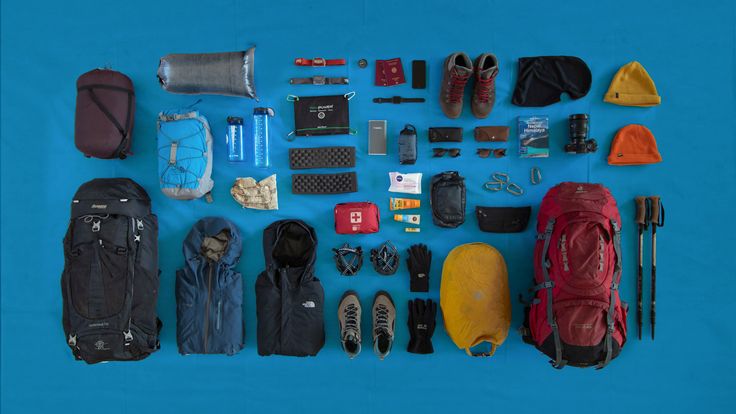
Clothing
Base Layers: Moisture-wicking long-sleeve shirts; Thermal underwear (top and bottom)
Insulating Layers: Fleece or lightweight down jacket; Insulated vest (optional)
Outer Layers: Waterproof and windproof jacket; Waterproof and windproof pants
Trekking Pants: Lightweight, quick-dry trekking pants; Convertible pants (optional)
Shorts: Comfortable trekking shorts
Headwear: Warm hat or beanie; Sun hat or cap; Buff or neck gaiter
Gloves: Lightweight gloves; Insulated and waterproof gloves or mittens
Footwear: Sturdy trekking boots; Lightweight camp shoes or sandals; Warm socks
Gear and Accessories
Backpack: Daypack (20-30 litres); Main trekking bag (40-60 litres)
Sleeping Gear: Sleeping bag; Sleeping bag liner (optional)
Trekking Poles: Adjustable trekking poles
Hydration: Water bottles or hydration system (2-3 litres); Water purification tablets or filter (optional)
Navigation: Map of the trek; Compass or GPS device
Sun Protection: Sunglasses; Sunscreen; Lip balm with sunblock
Personal Items: Travel documents; Cash; Camera or smartphone; Power bank
First Aid Kit: Basic first aid supplies; Personal medications; Altitude sickness medication
Additional Items
Snacks: Energy bars; Nuts; Dried fruits
Hygiene: Personal hygiene items; Hand sanitizer; Biodegradable soap
Laundry: Lightweight travel detergent; Quick-dry towel
Emergency Items: Multi-tool or knife; Headlamp or flashlight (with extra batteries)
Annapurna Base Camp Trek weather and temperature
The weather and temperature on the Annapurna Base Camp (ABC) trek can vary significantly depending on the season and altitude.
Analyzing Nepal's annual temperature variation, it is evident that the best seasons or climate for trekking are spring and autumn, the months of March to May and September to November.
The daytime temperatures are between 50°F and 68°F around the valleys and basin, and they can drop to 23°F and 41°F at base camp in higher territory. The weather is usually good with clear skies; thus, the visibility of the surrounding mountains is excellent.
However, between June and August, it rains during the summer, and though it makes the grounds look green and beautiful, they are slippery when there is rain.
From March to September, temperatures during the day reach 15-25 Celsius. However, it is mostly cloudy.
Winter, from December to February, is characterized by cold weather and snow, mostly at higher altitudes in some regions. Temperatures during the day can easily be between -5 and – 10 °C at lower levels and extremely cold at night, dropping to -15 – 5°C at Annapurna Base Camp.
Despite this, snow and ice are reported to be often present in some higher grounds of the region, which makes trekking conditions more challenging. Trekkers must be ready for any climate and weather conditions on the trek and pack appropriately.
Read more blogs



